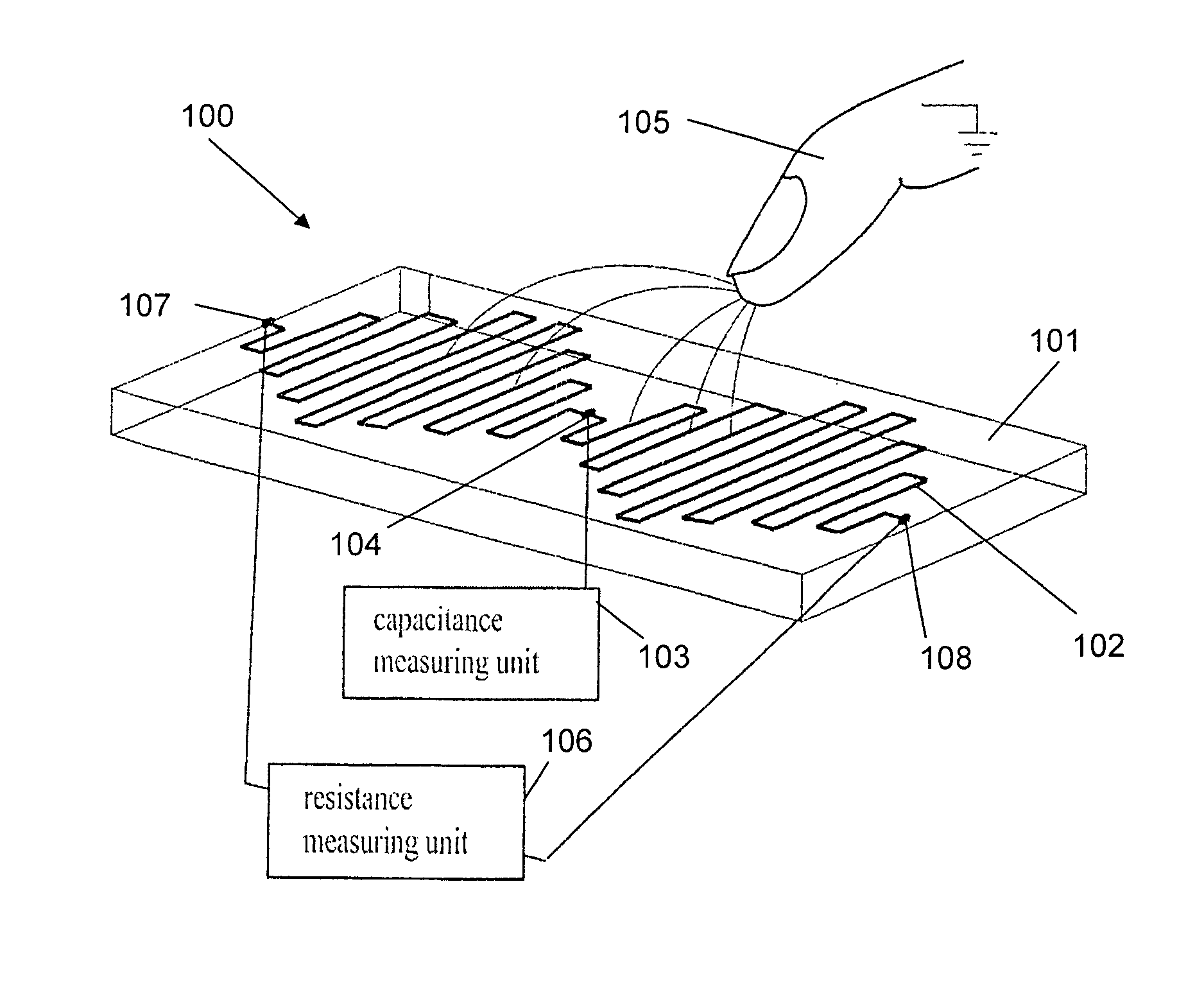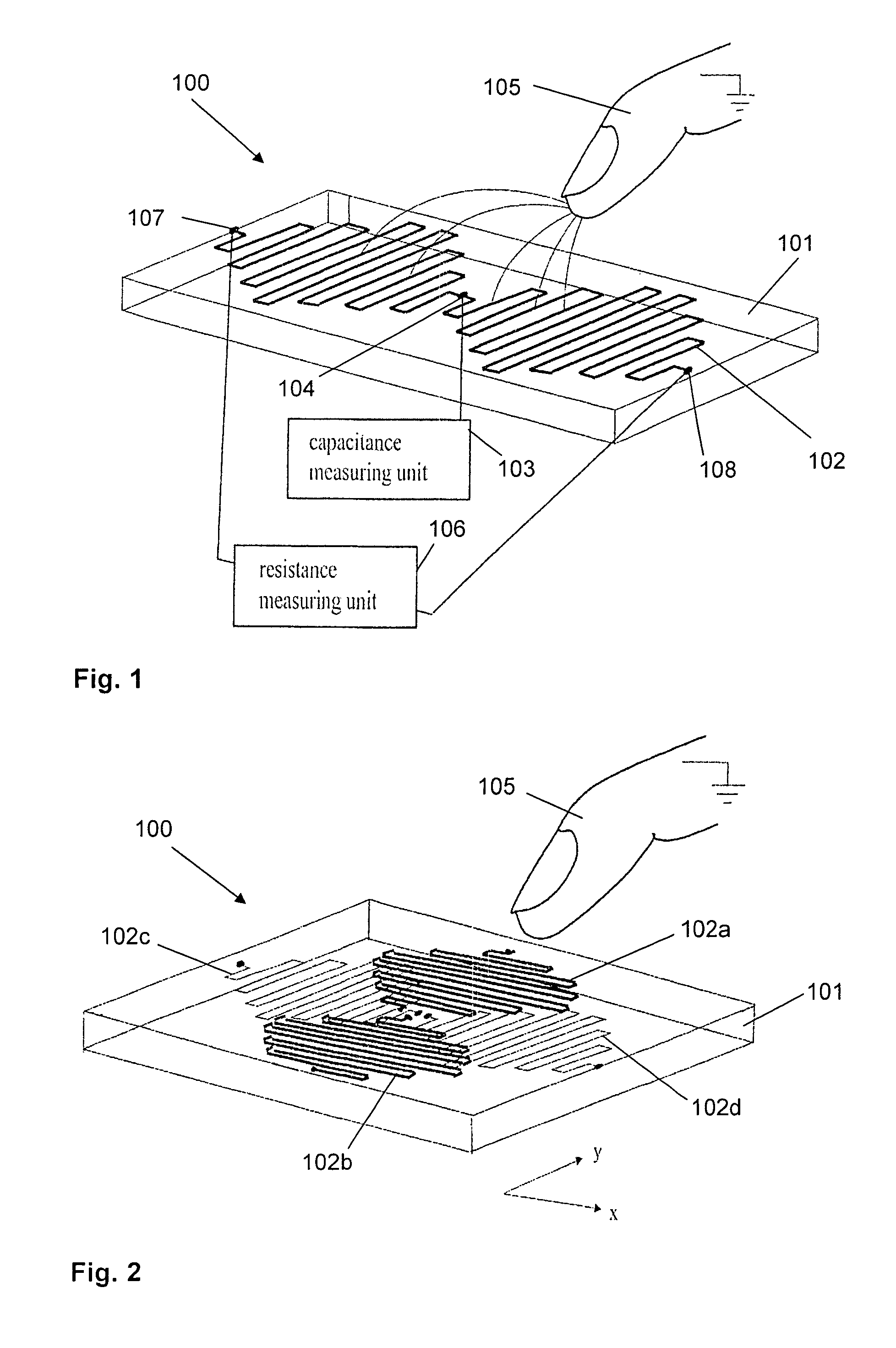Force sensitive touch sensor
a touch sensor and force technology, applied in the field of sensors, can solve the problems of brittleness and cracking, furthermore expensive, and disturb the clean design of the front side of the consumer product, and achieve the effect of widening the tolerance and more accurate force measuremen
- Summary
- Abstract
- Description
- Claims
- Application Information
AI Technical Summary
Benefits of technology
Problems solved by technology
Method used
Image
Examples
Embodiment Construction
[0028]In the following, exemplary embodiments of the present invention will be described in more detail. It has to be understood that the following description is given only for the purpose of illustrating the principles of the invention and is not be taken in a limiting sense. Rather, the scope of the invention is defined only by the appended claims and is not intended to be limited by the exemplary embodiments hereinafter.
[0029]It is to be understood that the features of the various exemplary embodiments described herein may be combined with each other unless specifically noted otherwise. Same reference signs in the various drawings and the following description refer to similar or identical components.
[0030]FIG. 1 shows a sensor 100 comprising an insulating support layer 101 and an electrically conductive sensor structure 102. The electrically conductive sensor structure 102 is arranged on an upper side of the insulating support layer 101. The electrically conductive sensor struc...
PUM
| Property | Measurement | Unit |
|---|---|---|
| transparency | aaaaa | aaaaa |
| operational wavelength range | aaaaa | aaaaa |
| electrically conductive | aaaaa | aaaaa |
Abstract
Description
Claims
Application Information
 Login to View More
Login to View More - R&D
- Intellectual Property
- Life Sciences
- Materials
- Tech Scout
- Unparalleled Data Quality
- Higher Quality Content
- 60% Fewer Hallucinations
Browse by: Latest US Patents, China's latest patents, Technical Efficacy Thesaurus, Application Domain, Technology Topic, Popular Technical Reports.
© 2025 PatSnap. All rights reserved.Legal|Privacy policy|Modern Slavery Act Transparency Statement|Sitemap|About US| Contact US: help@patsnap.com



